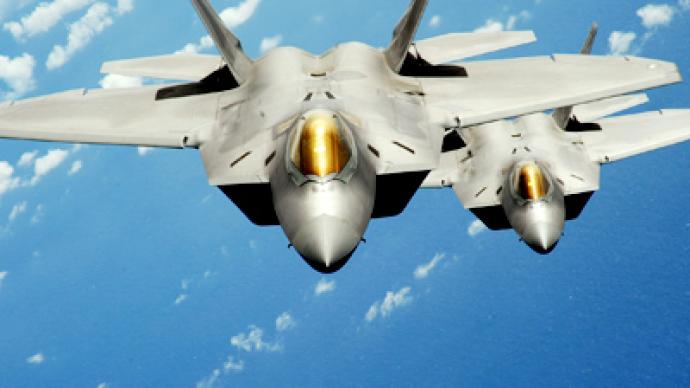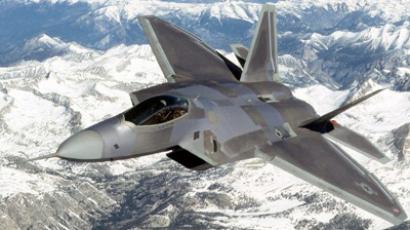F-22 pilots continue to risk their lives as 'oxygen problem' remains unsolved

Pilots continue to risk their lives flying the Air Force’s deadly F-22 Raptor jets, even after reporting more than two-dozen incidents onboard the craft. Now, however, the Pentagon thinks that the plane might not even be the cause of their concerns.
Investigators with the US Air Force are telling members of the media that the ”Combat Edge” G-suit vest worn by pilots while flying F-22 Raptor stealth jets may part of what’s to blame for a series of complaints filed by servicemen injured during training missions. At least 25 pilots have reported dizziness, disorientation and other symptoms similar to those associated with hypoxia while flying the F-22s; one pilot, Captain Jeff Haney, was killed during a November 2010 plane crash that was believed to be triggered by a malfunction with his oxygen supply.Now after repeated investigations into the actual F-22 jets themselves, the Air Force is considering a component of the actual outfit worn in the sky as a cause of the problem. Although the G suit vests are worn to avoid pilots from blacking out during high-speed operations, a statement emailed this week by the Air Force suggests that the same apparatus has also “increases the difficulty of pilot breathing under certain circumstances.”“Recent testing has identified some vulnerability and reliability issues in the upper pressure garment worn by F-22 pilots,” Lieutenant Colonel Edward Sholtis writes this week in an email on behalf of the Air Combat Command. “Testing has determined that the upper pressure garment increases the difficulty of pilot breathing under certain circumstances,” Sholtis explains. Sholtis adds that the Combat Edge itself isn’t believed to be responsible for the actual incidents reported by the more than two-dozen injured pilots, but thinks it is playing a role nonetheless. “The upper pressure garment is not ‘the’ cause of physiological incidents, and we still have other variables to work through before we can determine what the major factors are and how they interact to produce the number of unexplained incidents we’ve seen,” Sholtis says. “We’re also looking at the layering of other aircrew flight equipment as contributing to that difficulty.”US Defense Secretary Leon Panetta ordered an investigation into the F-22s after two pilots publically spoke out about their concerns on national television earlier this year. The Air Force had originally issued a letter of reprimand to one of those pilots, Captain Josh Wilson, after he refused to continue flying in the Raptors. Last month the Air Force finally imposed flight restrictions on the craft a year-and-a-half after Captain Haney was killed during a training mission.














